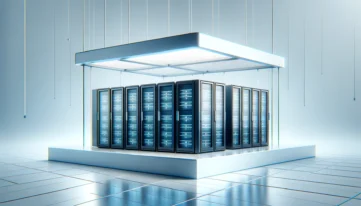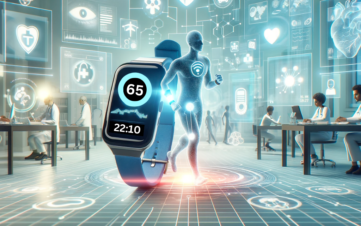One of the first factors to consider for customers when choosing hardware components is the cost. It is very important to produce high-quality work while spending as little money as possible. In addition, cost and quality should be balanced against the overall timelines of the project.
Development kits are systems that give us easy access to input/output (I/O) pins so that we can build custom circuits and start developing the firmware to run the components. They give us a foundation on which we can build things for the IoT project. When choosing an IoT board, one should first look at the connectivity options. This is because smart devices are largely defined by their connectivity. Development kits should preferably include the required connectivity protocols or at least provide a way to interface with other hardware that provides the required connectivity protocols.
Support for peripherals and features such as common ports like USB or HDMI, buses for serial protocols like I2C and SPI, or pin outputs for a pulse with modulation (PWM) devices like dimmable lights or servo motors are also important for IoT board selection. Now, we will talk about the most commonly used IoT boards for IoT product development and their technical specifications.
1. Discovery Kit With STMP32MP157A MPU
This kit facilitates the development of embedded Linux, like the Giant Board. The dedicated 3D graphics processing unit (GPU) that drives the MIPI-mounted LCD with a touch panel is one of the key differentiators. Even an audio codec is included for completeness. Hard real-time and lower power modes are made possible by the inbuilt M4 MPU. Ethernet, Wi-Fi, and Bluetooth connectivity are also available on this board. This dev kit is a good option for IoT devices that run user-facing applications as a result of all these characteristics.
Technical Specs:
- Processor: STM32MP157 ARM dual Cortex-A7 32-bit @ 800 MHz + Cortex-M4 32-bit MPU @ 209 MHz
-
Memory:
- MicroSD
- 4Gbit DDR3L @ 533 MHz
- Low–Level IO: SDIO, I2C, SPI, UART, 12-bit ADC, PWM
- Multimedia: Display – MIPI DSI 4″ touch screen TFT 480×800 pixels; Audio – Codec
- Inputs: Buttons, Touch screen
- Connectivity: 1Gbps Ethernet, Wi-Fi, BLE 4.2, USB
- Power: 5V / 3A USB Type-C power supply
2. ESP32
The Espressif Systems chip family includes the low-cost, low-power ESP32, which has Wi-Fi and dual-mode Bluetooth functionality. One of the key features is the dual-core or single-core Tensilica Xtensa LX7 microprocessor, which has a clock rate of up to 240 MHz. The idea behind the creation of ESP32 is the use of IoT in wearable electronics and mobile applications. It includes built-in RF baluns, power amplifiers, low-noise receive amplifiers, filters, power management modules, touch-sensitive pins, a hall effect sensor, and temperature sensors. It also includes touch-sensitive pins.
Technical Specs:
- Processor: ESP32-S3-WROOM with Xtensa 32-bit LX7 @ 240 MHz
-
Memory:
- 128KB ROM, 4MB external SPI flash
- 2MB PSRAM, 320KB SRAM, 16KB SRAM in RTC
- Low-Level IO: I2C, SPI, UART, ADC, PWM
- Multimedia: Audio – I2S
- Inputs: Buttons
- Connectivity: Wi-Fi, BLE5, USB OTG, USB-UART bridge
- Power: MicroUSB, headers

3. Raspberry Pi 4 Model B
This is one of the well-known IoT Boards built with IoT technology. The Raspberry Pi 4 Model B is the latest iteration of the affordable Raspberry Pi computer. It is a small computer and great for a prototype with a 28nm-based 1.5G Quad-Core CPU and 4Gb DRR4 RAM. To achieve PC-like capabilities, the Raspberry Pi 4 features 4K Micro HDMI, USB 3.0, BLE Bluetooth 5.0, dual-band 2.4/5.0 GHz Wireless LAN, USB-C power port, and True Gigabit Ethernet compatible with PoE.
Technical Specs:
- Processor: BCM2711, Quad-core ARM Cortex-A72 64-bit @ 1.5 GHz
-
Memory:
- MicroSD
- 2GB, 4GB, or 8GB LPDDR-3200 SDRAM
- Low–Level IO: I2C, SPI, UART, 12-bit ADC, PWM
- Multimedia: Display – 2x Micro HDMI, LCD; Audio – Codec
- Inputs: Buttons, Touch screen, MIPI CSI camera port
- Connectivity: 1 Gbps Ethernet, Wi-Fi, Bluetooth, USB 2.0 & 3.0
- Power: 5V USB-C, Power over Ethernet (PoE)
Final Words:
Every IoT hardware application starts with a development kit, therefore it’s critical to consider all your options and select the best one. Making the proper choice will allow us to decrease costs, accelerate time to market, and include all the features we desire.










